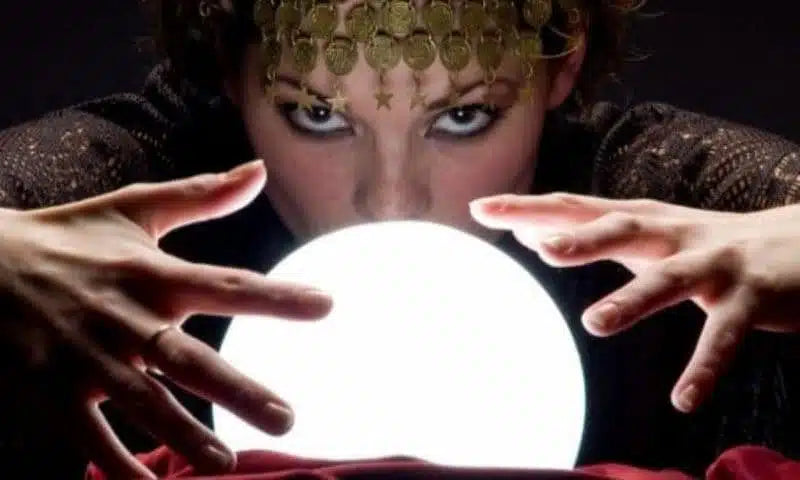
Fortune teller or palmist? Let's clarify.
Share
People often get very confused with esoteric subjects, mystical knowledge, traditional wisdom and, in general, with everything related to spiritual themes.
One of the most common mistakes is making the connection between fortune teller and palmist. Many people use these two terms interchangeably, which is a rather gross error.
To avoid any misunderstanding, we would like to clarify the clear distinction between these two figures, thus attempting to provide a definitive statement on the subject.
Our intention, to be completely honest, is to use this distinction to clarify some basic concepts that should be known by anyone who wants to embark on a spiritual path or open themselves to mysterious knowledge.
The fortune teller: the person who reads the future with cards
Cartomancy has very deep roots that reach back to the dawn of time, but the modern version of cartomancy has very specific references that have made it evolve from the eighteenth century onwards.
In fact, it was in the eighteenth century that cartomancy regained much strength and became a highly appreciated trend. Numerous scholars began to read the Tarot and document themselves on this subject.
In reality, even older Tarot decks have been found, dating back to the Renaissance, but it seems that at that time the deck was used for certain games and for meditation, not for investigating the future.
The fact is that in the eighteenth century scholars such as Etteilla They created extremely important manuals for card reading. Etteilla's manual was read by thousands of people and thus constituted a milestone in cartomancy divination.
We can say without fear of contradiction that cartomancy has always existed, a practice that has accompanied man throughout his history, but it has enjoyed moments of emergence and submersion.
The eighteenth century, often described as the “Age of Enlightenment,” while omitting much of the truth, was a significant moment of emergence that led to a development of cartomancy that has never wavered.
Cartomancy's moments of good and bad fame continued in the centuries that followed, but by then the discipline had built such a strong backbone that it had been able to withstand adversity and reach us today.
Many of you have probably had occasion to explore this ancient discipline. Since some of our readers may have never encountered a Tarot deck, let's first understand how a consultation works.
When you consult a fortune teller, you ask a question, which can be broad or much more specific. For example, you might ask, "What does the future hold for me in my love life?", or you can get straight to the point with, "Does my partner love me?" or "Is it appropriate for me to do this or that in my career?"
It's important to note that the question is crucial for the reading process. Therefore, it's important to think carefully about the form before asking it.
Once the fortune teller has understood the question, he draws cards from the Tarot deck and places them on the table. Fortune tellers don't arrange the cards randomly, but in a specific pattern. They usually use a cross or circle shape.
Once the cards are turned over, the actual divination phase begins. Each card has different meanings that can vary based on their position, the relationship between the cards drawn, the symbols they contain, even the direction of the faces of the depicted characters, the card's orientation... the fortune teller draws his or her answer.
It is important to note that the gift of divination connects three subjects: the querent, the fortune teller and the Tarot deck.
The true fortune teller studies the Arcana of the deck in great detail, but he also has a natural gift of foresight and it is this that takes over during the reading.
The fortune teller's listening skills are remarkable and from how the question is asked he will receive an influence that will lead him to read the symbols and meanings in one way or another.
The fortune teller, the Tarot deck, and the querent are therefore united as factors that, when added together, will lead to a specific result: the answer.
The palmist: the one who reads the future in the palm of the hand
Palm reading has ancient origins: it is said that as a practice it was born in the East, but forms of palmistry can be found throughout the world and in all eras.
Through this practice, one can explore one's destiny, but also discover oneself, one's strengths, one's weaknesses, one's limits, and what is right for us.
From a technical standpoint, we can say that palmistry, compared to cartomancy, deals with slightly broader topics. We might say it addresses general themes, but that's not always the case.
Unlike fortune telling, palmistry must be done in person and cannot be done remotely: to read the palm of the hand, you must be present and directly involved.
The choice of hand to read already has important meanings that provide useful information. A woman's right hand represents her birth situation, with her destiny already written, while the left hand is a kind of report recording her experiences up to that point and how they have affected the destiny written on the other hand.
For men, the exact opposite is true: the left hand is considered the hand in which destiny is written a priori, while the right hand contains experiences.
Some traditions hold that one hand represents the present and the past, and the other the future. However, the lines and grooves on the hand are called "lines," and the bumps on the palm are called "mountains."
Palm reading, if done by a skilled palmist, can be extremely useful for gaining a better understanding of oneself as well as understanding the best choices for the future.
